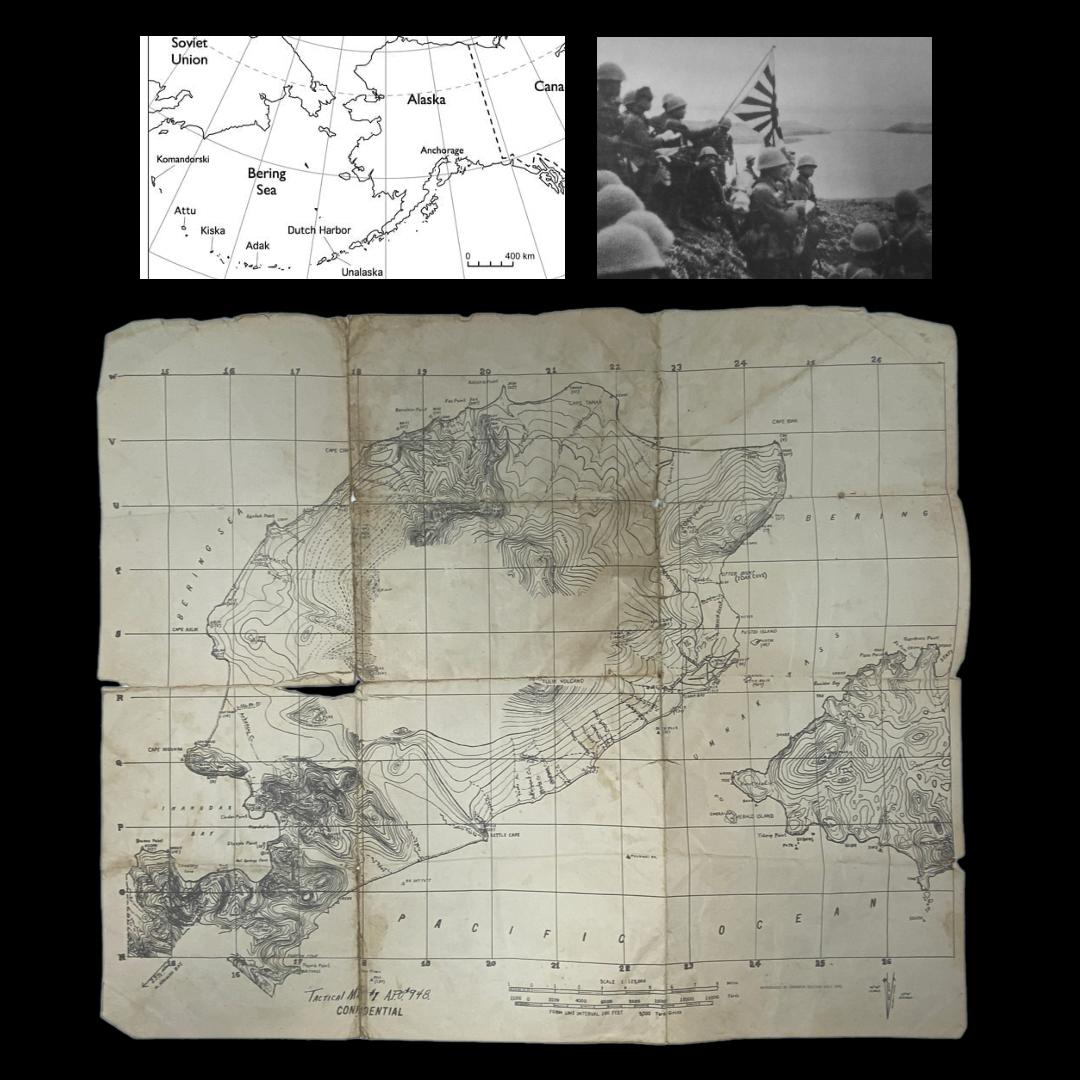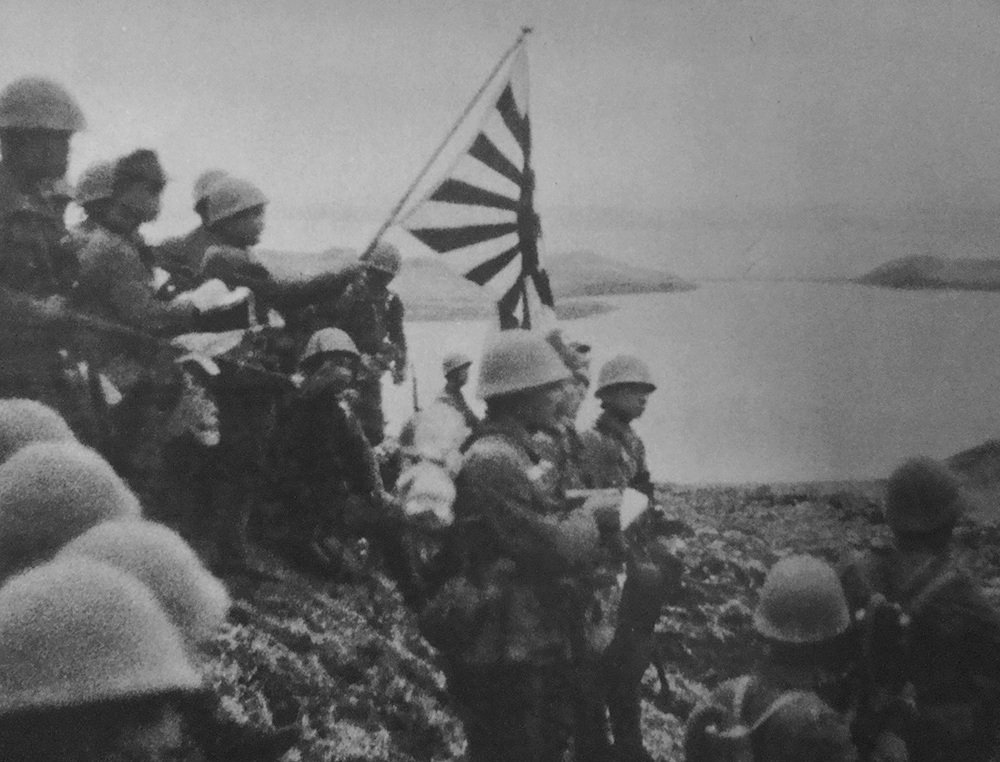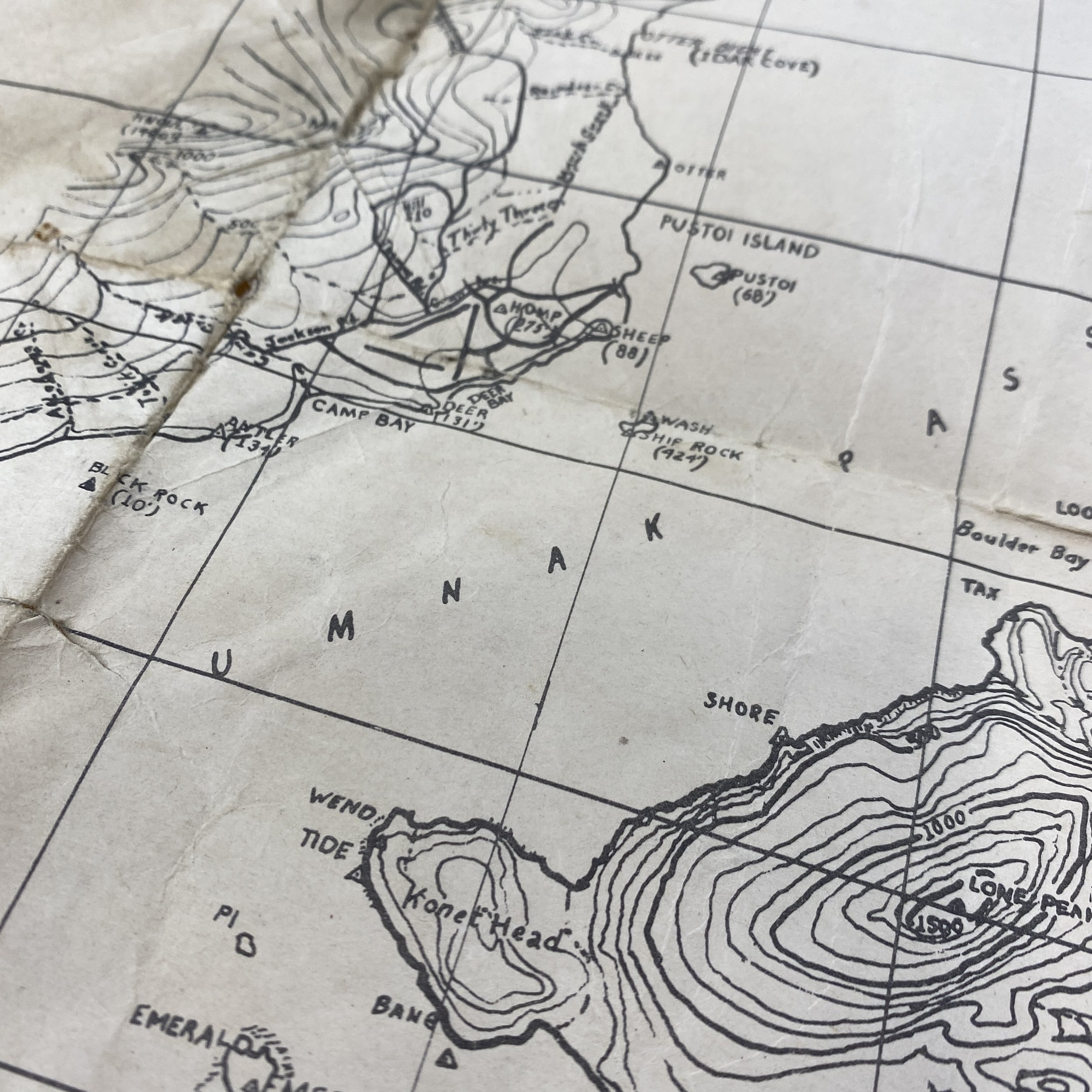VERY RARE! WWII UMNAK Aleutian Islands Campaign U.S. Army CONFIDENTIAL Tactical Map Invasion of Japan




























VERY RARE! WWII UMNAK Aleutian Islands Campaign U.S. Army CONFIDENTIAL Tactical Map Invasion of Japan
Comes with hand-signed C.O.A.
This incredibly rare and museum-grade artifact is an extremely rare U.S. Army “CONFIDENTIAL” marked TACTICAL MAP from the infamous Aleutian Islands campaign of WWII. This very limited tactical map print of Umnak Island saw action during May 1942, when the Japanese naval force of two aircraft carriers and several smaller ships steamed 180 miles southwest of Unalaska Island. Their mission was to neutralize the air base at Dutch Harbor and destroy its ability to attack Japan. In a strange compromise, due to the lack of flat ground, American airfields had been built 100 miles east, at Cold Bay, and 80 miles west, on Umnak Island, Cape Field. On June 3rd, at 6:00 a.m., eleven Kate bombers and six Zero fighters attacked the base. The Americans, having broken the enemy code, were prepared. Finding no airfield, the planes dropped their bombs on the Army barracks of Ft. Mears. This tightly packed cluster of white buildings housed most of the 9,000 men on the island. More bombs fell on radio stations and anti-aircraft positions. No Japanese planes were shot down. Strangely, communication with the American airfields failed during the attacks. No planes came to the defence of Dutch Harbor. Over the next 24 hours, American aircraft searched for the Japanese. A few unsuccessful attacks were made against the small fleet.
As of June 1, 1942, the US military strength in Alaska stood at 45,000 men, with about 13,000 at Cold Bay (Fort Randall) on the tip of the Alaskan Peninsula and at two Aleutian bases: the naval facility at Dutch Harbor on Unalaska Island, 200 miles (320 km) west of Cold Bay, and the recently built Fort Glenn Army Airfield 70 miles (110 km) west of the naval station on Umnak Island. Army strength, less air force personnel, at those three bases totalled no more than 2,300, composed mainly of infantry, field and antiaircraft artillery troops, and a large construction engineer contingent, which was used in the construction of bases. The Army Air Force's Eleventh Air Force consisted of 10 B-17 Flying Fortress heavy bombers and 34 B-18 Bolo medium bombers at Elmendorf Airfield, and 95 P-40 Warhawk fighters divided between Fort Randall AAF at Cold Bay and Fort Glenn AAF on Umnak. The naval commander was Rear Admiral Robert A. Theobald, commanding Task Force 8 afloat, who as Commander North Pacific Force (ComNorPac) reported to Admiral Nimitz in Hawaii. Task Force 8 consisted of five cruisers, thirteen destroyers, three tankers, six submarines, as well as naval aviation elements of Fleet Air Wing Four.VER
This map is heavily used and is a very rare glimpse into a bloody and unknown battleground of WWII.
Aleutian Islands campaign:
The Aleutian Islands campaign was a military campaign conducted by the United States, Canada, and Japan in the Aleutian Islands, part of the Territory of Alaska, in the American Theater and the Pacific Theater of World War II starting on June 3, 1942.[3] In the only two invasions of the United States during the war of a U.S. incorporated territory, a small Japanese force occupied the islands of Attu and Kiska, where the remoteness of the islands and the challenges of weather and terrain delayed a larger American-Canadian force sent to eject them for nearly a year. Successful Japanese invasions of other U.S. territories, which were unincorporated territories, in the western Pacific shortly after the Attack on Pearl Harbor included Wake Island, Guam, and the Philippines. The islands' strategic value was their ability to control Pacific transportation routes as US General Billy Mitchell stated to the U.S. Congress in 1935, "I believe that in the future, whoever holds Alaska will hold the world. I think it is the most important strategic place in the world.”
The Japanese reasoned that control of the Aleutians would prevent a possible US attack across the Northern Pacific. Similarly, the US feared that the islands would be used as bases from which to carry out a full-scale aerial attack on US West Coast cities like Anchorage, Seattle, San Francisco, or Los Angeles.
A battle to reclaim Attu was launched on May 11, 1943 and completed after a final Japanese banzai charge on May 29. On August 15, 1943, an invasion force landed on Kiska in the wake of a sustained three-week barrage, only to discover that the Japanese had withdrawn from the island on July 29.
The campaign is known as the "Forgotten Battle" because it has been overshadowed by other events in the war.
Military historians often believe that the Japanese invasion of the Aleutians was a diversionary or feint attack during the Battle of Midway that was meant to draw out the US Pacific Fleet from Midway Atoll, as it was launched simultaneously under the same commander, Isoroku Yamamoto. Some historians have argued against that interpretation and believe that the Japanese invaded the Aleutians to protect their northern flank and did not intend it as a diversion.